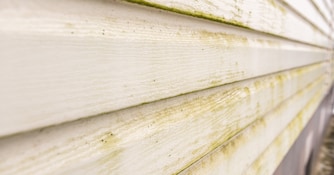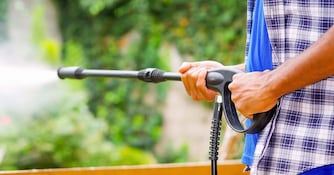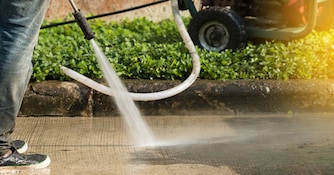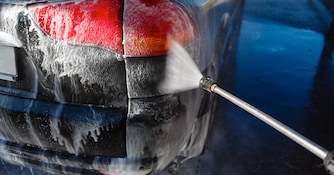
Stripping Paint From Wood
Manually stripping paint with a scraper is an intense, time-consuming project. It's such a laborious job, most folks don't ever want to do it again.
But it doesn’t have to be such an ordeal if you use a pressure washer. Let the high pressure do the dirty work and save your arm from hours of tedious scraping.
Determine How Much Pressure Is Needed
According to the video, a heavy-duty project like this requires a pressure washer with a rating of at least 2500 PSI. Other sources say you should have between 2,000 and 4,000 PSI.
Based on our experience, we recommend getting a pressure washer with at least 3000 PSI. It requires a lot of pressure to break the chemical bond between the surface and the paint. Never use this method on hardboard siding, as it's more susceptible to moisture and can easily be damaged by the high pressure.
Prepare and Be Safe
Before you begin, make sure to prepare doors and windows to prevent water from getting into your home. If you're stripping paint off a porch next to an entryway, you want to make sure the door jam is covered to prevent water from being propelled indoors.Wear safety glasses
Safety glasses are a must when stripping paint with a pressure washer, as the high-pressure spray at such close proximity can propel paint chips that may get into your eyes. You should also wear steel-toed boots, but at the very least, closed-toe shoes. Since you're applying highly pressurized water very close to your feet in some cases, you must protect your feet and toes.
The pressure used to strip paint is more than enough to break through skin and flesh. Make sure to protect yourself from any accidents that could occur.
Move With the Grain
When you're ready to begin, it's important to make sure you keep the pressure washer in continuous motion in the same direction of the wood grain. Move parallel to the lines in the wood, which means from one end of a board to the other - not across the width of a board (against the grain). Moving with the grain will help prevent you from damaging the integrity of the wood.
Always keep the nozzle at a slight angle to the surface so the water can more effectively get under the paint without gouging the wood. While it's possible there may still be some paint that doesn't come off with the pressure washer, the vast majority should.
And keep in mind that your aim should be to remove all loose paint so it doesn't peel off the new layer you put on afterward.





